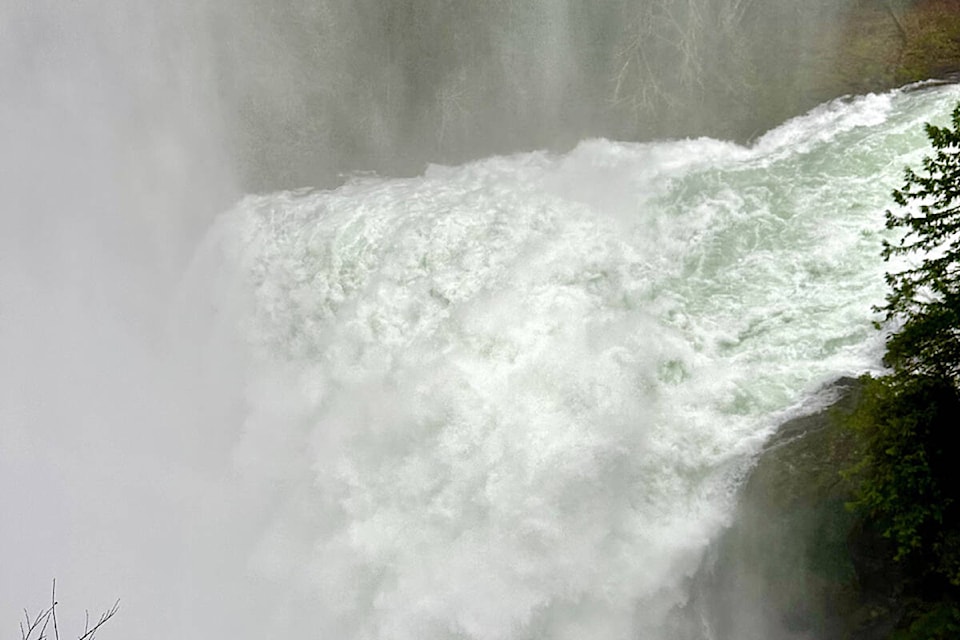Elk Falls Canyon is roaring with a flow of water not seen since 2016.
Consequently, BC Hydro is extending its public safety advisory to stay away from the water flow within Elk Falls Canyon and the Campbell River through Feb. 8 as it continues to release water from the John Hart Dam (SEE UPDATE BELOW.
“There has been significant rainfall and snowmelt in the upper Campbell River watershed and the high downstream flows down the Campbell River will need to continue for a longer period,” BC Hydro spokesperson Stephen Watson says.
About 250 mm of precipitation has fallen in the upper watershed since Jan. 28. With extended high freezing levels continuing, the region is likely seeing an equivalent of that in snow to water equivalent flowing into area reservoirs. The peak hourly inflow rate was about 1,300 cubic metres per second (m3/s) around midnight on Jan 29.
That’s an Olympic-sized swimming pool every two seconds, Watson says. The average water inflow into the system as of Jan. 31 was about 870 m3/s and is expected to be about 800 m3/s today (Feb. 1). Then it declines with the drier and cooler weather.
Update: Elk Falls on the #CampbellRiver system.#BCStorm pic.twitter.com/RDunQmqCND
— Stephen Watson, BC Hydro (@SWatson_BCH) January 31, 2024
In response to all these inflows, the Upper Campbell Reservoir/Buttle Lake has risen about 2.2 metres, and is now at 219.8 metres above sea-level and rising.
“We proactively started releasing water in the evening of Jan. 24 out of concern for three atmospheric rivers in succession with heavy rain and warm temperatures,” Watsons says. “Two of them centered on Central Vancouver Island. With the increase in the upstream inflows, we increased the water discharge down Elk Fall from 80 m3/s to 110 m3/s on Jan. 29.
“Tonight (Jan. 31), we will increase the flow again down the canyon to about 195 m3/s. We have not been at that flow rate since 2016. The total release below the John Hart Dam and powerhouse will then be around 320 m3/s.
“With the increase in downstream flow adjustments the Upper Campbell Reservoir/Buttle Lake may reach as high as 221.5 metres. We are unable to exceed 222 metres. There is uncertainty as to the amount of snowmelt that may into the system over the next two days. There is a possibility we need increase the discharge again tomorrow (Feb. 1) to ensure we don’t exceed 222 metres. Hopefully, we can hold the overall downstream flow rate at 320 m3/s and slowly move downward into next week.”
Temporary safety signage along the river system will be updated.
BC Hydro has been communicating with the City of Campbell River and the Strathcona Regional District over the situation. Those daily communications will continue, Watson says.
BC Hydro expects to be reducing the flow in the Friday, Feb. 2 morning.
UPDATE FEB. 5: BC Hydro will continue to release water at a rate of 110 m3/s until Thursday, Feb. 8 with flows returning to normal on Friday, Feb. 9.
The five-day period from Jan. 29 to Feb. 2 had the highest water inflow average, at 646 m3/s, on record into the Campbell River system. BC Hydro records go back to 1963.
READ MORE: Storm to bring heavy rain and high sea levels to the mid-Island region
